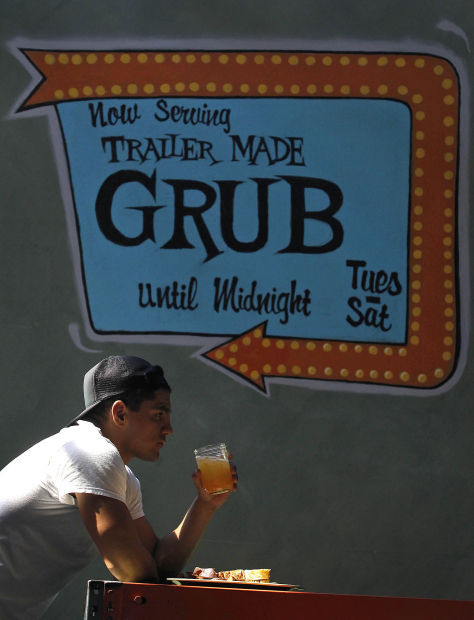PHOENIX — If Arizonans approve a hike in the minimum wage, be prepared to pay an extra 30 cents for that $5 burger, fries and soda at your favorite fast-food restaurant.
That’s the conclusion of a study by the Grand Canyon Institute, which looked at the effects on Arizona if voters approve Proposition 206 on the November ballot. The measure would increase the state minimum wage, currently $8.05 an hour, to $10 an hour in January and to $12 an hour in 2020.
Passage would mean more money for about 790,000 Arizonans, or close to 30 percent of the state’s workforce, figures Dave Wells, research director for the institute. That includes not only workers at the very bottom of the pay scale but also those now making above $12 who likely would find their salaries pushed up.
“These (latter) workers should also expect a modest pay increase, as employers try to preserve some level of a premium above the minimum wage to encourage better morale, productivity and lower turnover,” he wrote.
On the other side of the equation, Wells estimates employers seeking to blunt the effect of higher expenses would cost Arizonans about 13,000 jobs.
That number includes layoffs, jobs not filled when workers leave, and the loss of new positions that would otherwise be created, he said.
Garrick Taylor, spokesman for the Arizona Chamber of Commerce and Industry, said the study backs at least some of the arguments his organization has been making against the proposition.
“There is finally evidence and acknowledgment that this nearly 50 percent wage hike will result in job loss,” he said.
There are two problems with Taylor’s prediction of a “nearly 50 percent wage hike.”
One is math.
The 2006 voter-approved law that created the state’s first-ever minimum wage requires annual adjustments matched to inflation.
That’s what moved the figure from $6.75 an hour then to $8.05 now, and is going to increase the minimum to $8.15 an hour in 2017 even if Proposition 206 fails.
Assuming inflation of 1.5 percent for the next three years, the minimum wage would reach $8.50 an hour in 2020. So the likely difference if the proposition passes is 41 percent.
Also, Wells said Taylor isn’t taking into account that a $12 minimum wage would finally bring the buying power of Arizonans back to where it was in 1968. That’s when the federal minimum wage was $1.60 an hour.
The buying power of Arizonans was on a decade-long decline until the 2006 minimum-wage measure was approved, and has stayed pretty much even since then because of the automatic inflation adjustment.
Wells cited figures from the Economic Policy Institute in concluding that close to 90 percent of the workers who would benefit from the proposition are at least 20 years old.
More than half of the workers who could get a pay increase are in full-time jobs of at least 35 hours a week, he said.
Taylor said that even if the figure of 790,000 workers who would benefit is accurate, it does not overcome the anticipated job losses.
“It’s not a small price to pay for the folks who will lose their job or, going forward, will miss out on the opportunities to grab that first rung on the career ladder,” he said. The measure would stifle job creation, he added.
As to what the measure would cost consumers, Wells, basing his estimate on other studies, predicts the higher cost of labor would boost prices anywhere from 0.5 percent to 1.6 percent.
Hardest hit, he said, are likely to be restaurants.
He said labor represents about 31 percent of total costs in full-service restaurants and about 25 percent in limited-service places like fast-food operations.
But full-service restaurants are likely to have a smaller percentage of their workers at minimum wage. For servers, that figure is currently $5.05 an hour, with Arizona law allowing a “tip credit” of $3 an hour. If Proposition 206 passes, the new minimum wage for tipped workers would be $9 a hour.
At fast-food places, a higher percentage of workers are at or near the minimum wage and tips are not a factor. Wells said the worst-case scenario would be a 10 percent increase in costs. That presumes every worker at a fast-food establishment is now being paid the bare minimum, something he said is unlikely.
So he settled at a figure of a 6 percent increase in food prices at restaurants.
There’s an interesting ripple effect. Wells figures that families earning at least $100,000 a year actually would be harmed a bit by higher minimum wages in the economy: They would be hit by the higher costs but wouldn’t get any real benefit on the income side.
Neither Taylor nor Steve Chucri, president of the Arizona Restaurant Association who was reviewing the report on Friday, criticized its methodology.
Former Democratic state lawmaker George Cunningham, a member of the Grand Canyon Institute board, said the study was not sponsored or paid for by anyone. He said the three largest sources of donations this year to the nonprofit group are Arizona Cardinals owner Michael Bidwill, the Arizona Education Association and the Professional Fire Fighters of Arizona.





